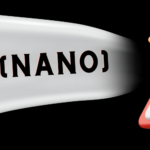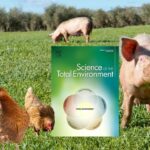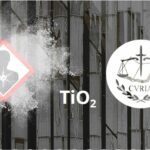
Risks associated with nano MBBT

By the AVICENN team – Last updated November 2020
Risks associated with nano MBBT
MBBT is insoluble and persistent / bioaccumulative.
In its opinions published in 2013 and 20151See :
– Opinion on 2,2′-Methylene-bis-(6-(2H-benzotriazol-2-yl)-4-(1,1,3,3-tetramethylbutyl)phenol), Scientific Committee on Consumer Safety (SCCS / CSSC), COLIPA No. S79, SCCS/1460/11, March 2013 (revised July 2013)
– Opinion on 2,2′-Methylene-bis-(6-(2H-benzotriazol-2-yl)-4-(1,1,3,3-tetramethylbutyl)phenol) (nano form), Submission III, SCCS, SCCS/1546/15, March 2015 (publication June 2015)., the European Scientific Committee on Consumer Safety (SCCS) supported the use of an uncoated form of MBBT as a UV filter in dermally applied products, mainly on the basis of a lack of dermal absorption as insoluble particles.
It has been permitted since 2018 at a concentration of 10% m/m, except for applications that may result in end-user lung exposure through inhalation of this substance.
However, due to the inflammatory effects by inhalation as well as a lack of clarity with respect to the potential genotoxicity/carcinogenicity and because some applications listed in the European catalog of nanomaterials used in cosmetics can lead to oral or inhalation exposure, MBBT nano was ranked as the highest risk nanomaterial in the cosmetic sector by the SCCS in October 20202Cf. Scientific advice on the safety of nanomaterials in cosmetics – Preliminary advice, Scientific Committee on Consumer Safety (SCCS / SCCS), 5 October 2020: Priority for Risk Potential (according to Brand et al., 2019): 34.
Any questions or comments? This information sheet compiled by AVICENN is intended to be completed and updated. Please feel free to contribute.
Other news on the topic
Upcoming Nano Agenda
- 8th Congress of Occupational Medicine and Health (CNMST 2026)
- Theme 5: Emerging pathologies and risks, Mr Henri Bastos (ANSES), Pr Lynda Bensefa-Colas (AP-HP), Dr Catherine Nisse (CHU Lille)
- Website: www.medecine-sante-travail.com
- 20th meeting of the “nano and health” dialogue committee
- Organizer: ANSES
- Training intended for occupational physicians, occupational risk prevention specialists (IPRP), company prevention specialists, prevention department staff from Carsat, Cramif and CGSS, institutional prevention specialists (Dreets, Dreal, MSA…).
- Organizer: French National institute of research and security (INRS)
- October 5 to 9, 2026
- Website: www.inrs.fr/…/formation/…JA1030_2026
File initially created in November 2020
Notes and references
- 1See :
– Opinion on 2,2′-Methylene-bis-(6-(2H-benzotriazol-2-yl)-4-(1,1,3,3-tetramethylbutyl)phenol), Scientific Committee on Consumer Safety (SCCS / CSSC), COLIPA No. S79, SCCS/1460/11, March 2013 (revised July 2013)
– Opinion on 2,2′-Methylene-bis-(6-(2H-benzotriazol-2-yl)-4-(1,1,3,3-tetramethylbutyl)phenol) (nano form), Submission III, SCCS, SCCS/1546/15, March 2015 (publication June 2015). - 2Cf. Scientific advice on the safety of nanomaterials in cosmetics – Preliminary advice, Scientific Committee on Consumer Safety (SCCS / SCCS), 5 October 2020: Priority for Risk Potential (according to Brand et al., 2019): 34




